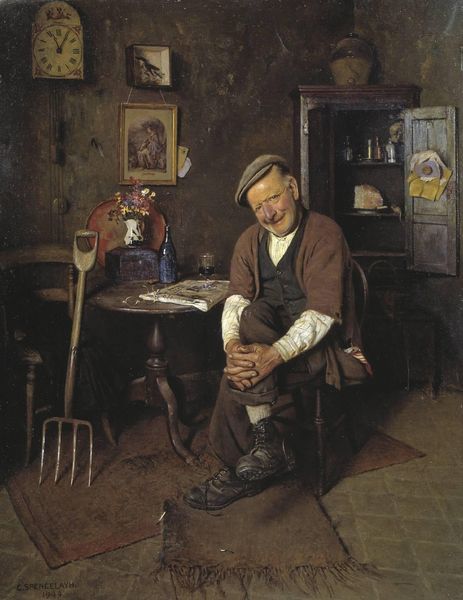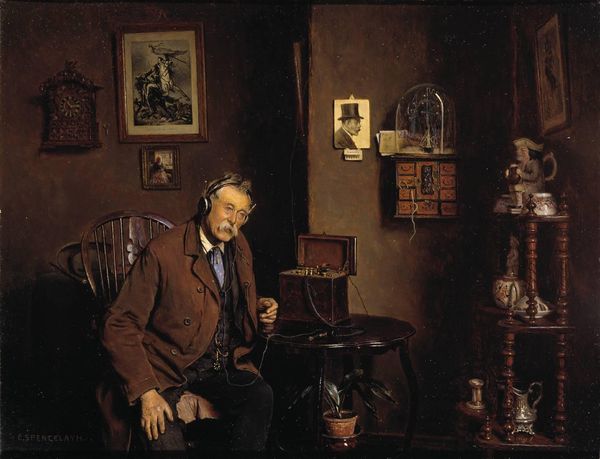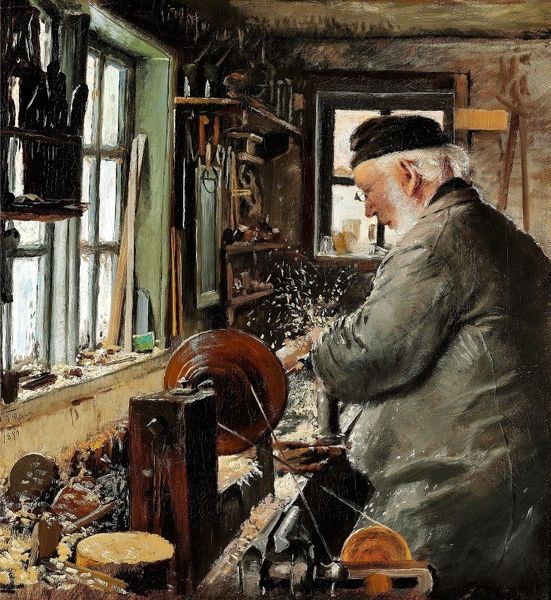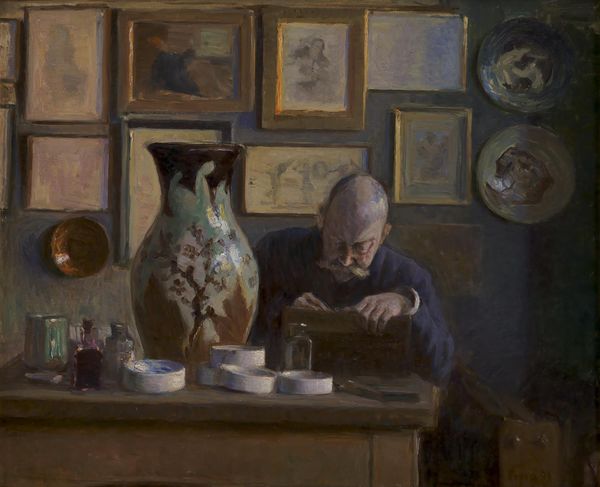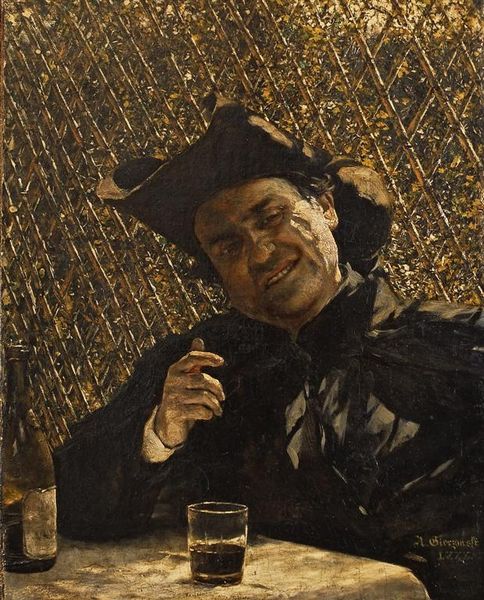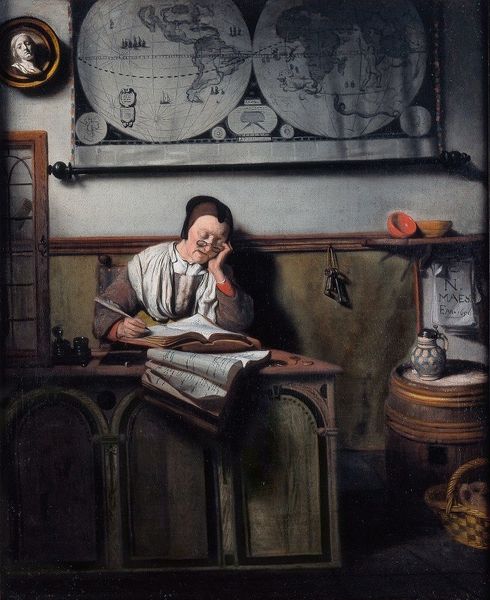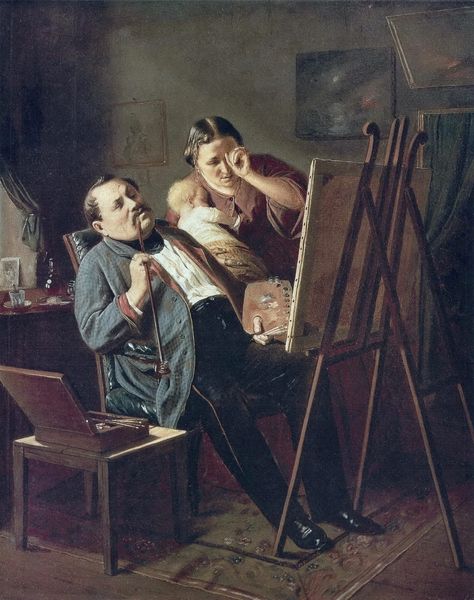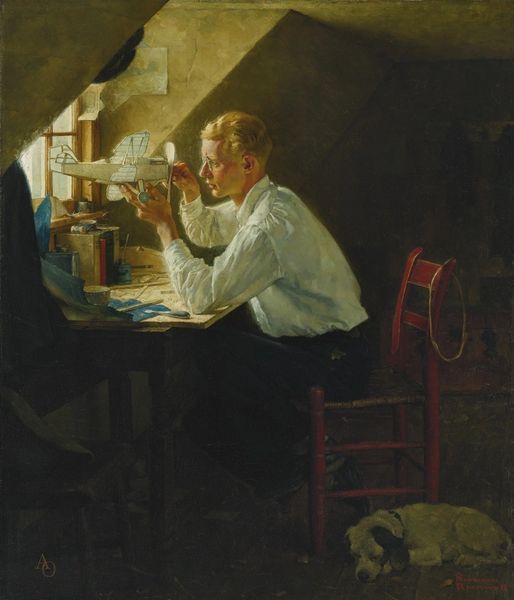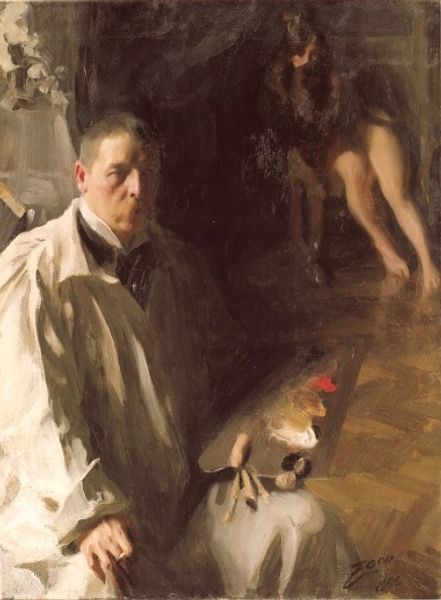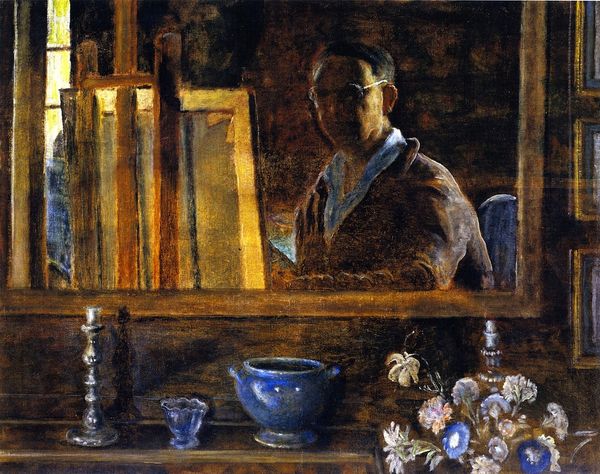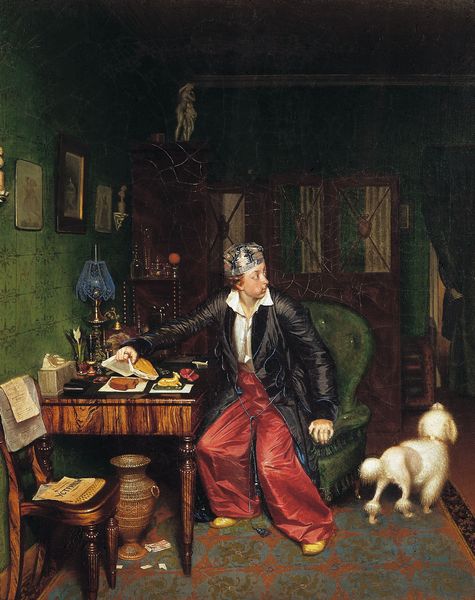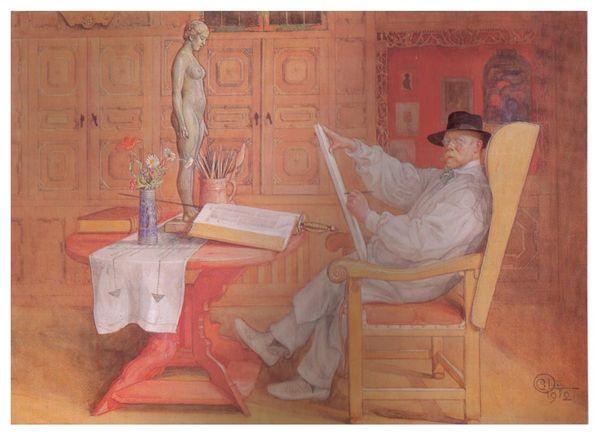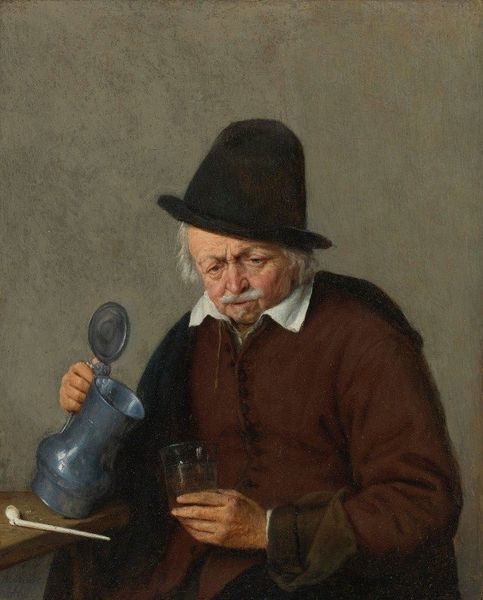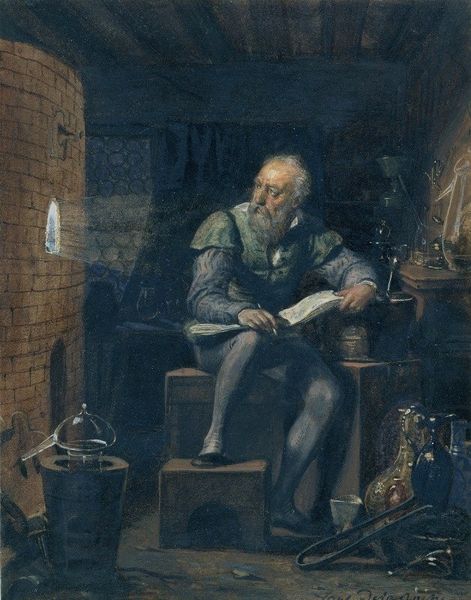
Dimensions: support: 176 x 228 x 15 mm
Copyright: © Tate | CC-BY-NC-ND 4.0 DEED, Photo: Tate
Editor: This is Charles Spencelayh's "Repairing the Barometer." The composition feels very still and focused, almost like a stage setting. What do you see in the way the artist has constructed the visual space? Curator: Note the masterful use of light to draw our eye to the scattered components and the central figure. The precise rendering of textures—wood, glass, fabric—speaks to Spencelayh's technical skill. How does the arrangement of objects contribute to the overall balance of the piece? Editor: It is a bit asymmetric, isn’t it? The barometer is on one side, but then we have more items on the other side of the table. Curator: Precisely. And observe how the verticality of the barometer is echoed, albeit in a different register, by the framed picture on the wall and the stack of books. The artist is clearly thinking in terms of formal relationships and visual echoes. Editor: I see that now, very interesting! I hadn't considered the picture as a deliberate echo. Curator: These visual relationships are essential to understanding the artist's intention. Considering them, I certainly learned something new.
Comments
tate 6 months ago
⋮
http://www.tate.org.uk/art/artworks/spencelayh-repairing-the-barometer-t07728
Join the conversation
Join millions of artists and users on Artera today and experience the ultimate creative platform.
tate 6 months ago
⋮
In 1957, one year before Spencelayh's death at the age of ninety three, the critic of The Manchester Guardian remarked of his paintings, 'Most of them depict old codgers - the obsolete slang rises unbidden - in junk-crammed interiors that will be of considerable interest to the social historian of the future' (quoted in Noakes, p.53). Spencelayh travelled from his home in Rochester to the South Kensington School (later renamed the Royal College of Art) each day throughout his training as an artist. He continued his studies in Paris before returning to England, first exhibiting at the Royal Academy in 1892. For the next sixty-six years, Spencelayh regularly sent canvases to the Royal Academy exhibitions. In this painting Spencelayh humorously portrays an old man who collects and hoards items from junk shops. Spencelayh's son Vernon recounted of his father: 'in his studio he would build on frames the room, sometimes even wall-papers, and hang the walls with what one could expect in a cottage of that date. He had rooms full of such junk' (quoted in Noakes, p.29). Surrounded by paintings, a stuffed bird and books piled on the bookshelf the old man attempts to restore his recent purchase, a barometer. Wearing a hat shaped like a fez and a red carnation for a buttonhole, he scoops up the mercury which he has spilt, his overturned pipe resting casually on the table top. In the same year, Spencelayh exhibited a similar painting entitled The Broken Vase which depicts an old man attempting to glue the handle back on to a vase. The artist's early training as a miniature painter is evident from the highly detailed technique of the painting, a skill which earned him the label 'the Human Camera' by his contemporaries (quoted in Noakes, p.37). Spencelayh began his career in an age when meticulously painted narrative subjects were popular both among artists and the exhibition going public. The movement towards Impressionism at the end of the nineteenth century went unnoticed by Spencelayh who continued to paint genre subjects on a small scale throughout his career. He continued, however, to be supported by several influential patrons and collectors,n including the wealthy Mancunian cotton merchant, Mr Levy, and Queen Mary. His paintings, dense with old-fashioned bric-a-bràc and comments about suburban society, have frequently been described as Dickensian. Both Spencelayh and Dickens were born in Rochester, frequently returning to the cathedral city throughout their careers. In his obituary in The Times the critic remarked 'His work was full of the spirit, of The Old Curiosity Shop in particular … he had a natural sympathy for the kind of man who keeps one - an old bachelor in his conception'. Further reading:Noakes, Aubrey, Charles Spencelayh and his Paintings, London 1978 Heather Birchall June 2002
